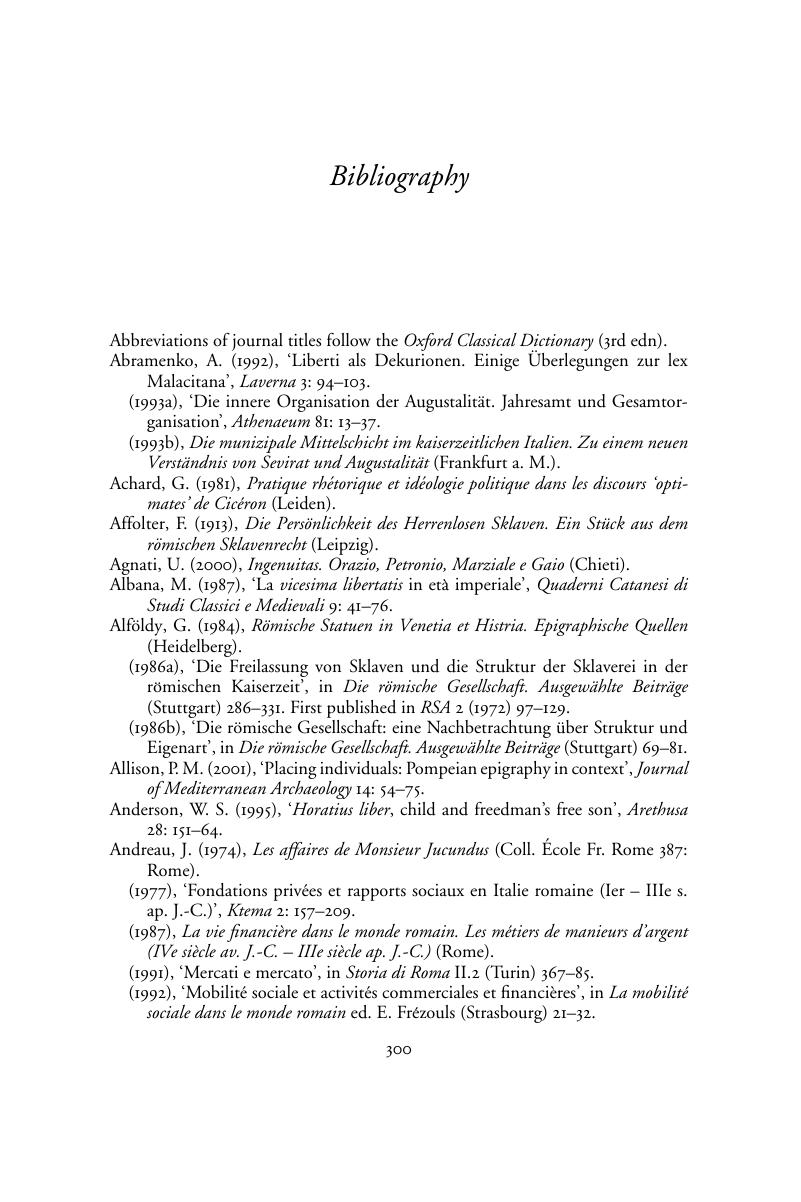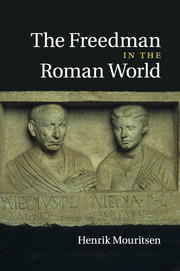Book contents
- Frontmatter
- Contents
- Acknowledgements
- 1 Introduction
- 2 Macula servitutis
- 3 Freedmen and their patrons
- 4 The power and status of freedmen
- 5 The practice of manumission at Rome
- 6 The freedman in the Roman economy
- 7 The freedman (and his son) in public life
- 8 Being a Roman freedman
- Bibliography
- Index
- References
Bibliography
Published online by Cambridge University Press: 21 January 2011
- Frontmatter
- Contents
- Acknowledgements
- 1 Introduction
- 2 Macula servitutis
- 3 Freedmen and their patrons
- 4 The power and status of freedmen
- 5 The practice of manumission at Rome
- 6 The freedman in the Roman economy
- 7 The freedman (and his son) in public life
- 8 Being a Roman freedman
- Bibliography
- Index
- References
Summary

- Type
- Chapter
- Information
- The Freedman in the Roman World , pp. 300 - 334Publisher: Cambridge University PressPrint publication year: 2011



